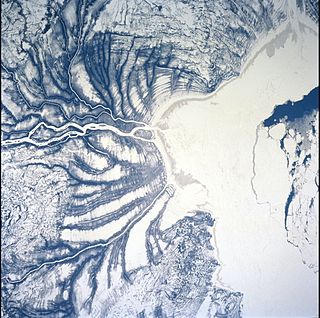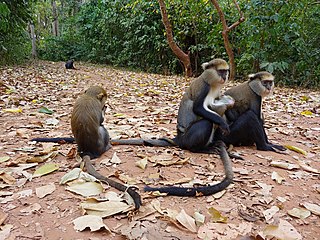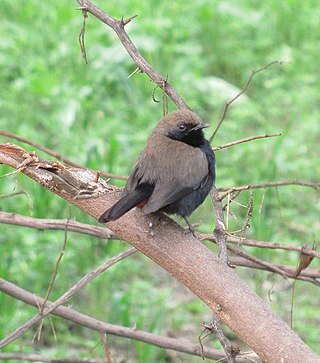
Kolleru Lake is one of the largest freshwater lakes in India and forms the largest shallow freshwater lake in Asia. 15 kilometers away from Eluru and 65 km from Rajamahendravaram, the lake is located between the Krishna and Godavari river deltas. Kolleru Lake is located in the Eluru district in the state of Andhra Pradesh. The lake is fed directly by water from the seasonal Budameru and Tammileru rivulets, and is connected to the Krishna and Godavari irrigation systems by over 67 major and minor irrigation canals. This lake is a major tourist attraction. Many birds migrate here in winter, such as Siberian crane, ibis, and painted storks. The lake was an important habitat for an estimated 20 million resident and migratory birds, including the grey or spot-billed pelican. The lake was declared as a wildlife sanctuary in November 1999 under India's Wildlife Protection Act of 1972, and designated a wetland of international importance in November 2002 under the international Ramsar Convention. The wildlife sanctuary covers an area of 308 km2.
Keoladeo National Park, or Keoladeo Ghana National Park, is a national park in Rajasthan, India. The national park hosts thousands of native, resident and migratory birds, especially during the winter season, when many different species fly to the Indian subcontinent to escape winter's wrath further north in Eurasia. At least 400 avian species have been noted or observed in the national park.

Bhitarkanika National Park is a 145 km2 (56 sq mi) large national park in northeast Kendrapara district in Odisha in eastern India. It was designated on 16 September 1998 and obtained the status of a Ramsar site on 19 August 2002. The area is also been designated as the second Ramsar site of the State after the Chilika Lake. It is surrounded by Bhitarkanika Wildlife Sanctuary, which spread over 672 km2 (259 sq mi). Gahirmatha Beach and Marine Sanctuary are to the east, separating the swamp region and mangroves from the Bay of Bengal. The national park and wildlife sanctuary is inundated by the rivers Brahmani, Baitarani, Dhamra, and Pathsala. It hosts many mangrove species, and is the second largest mangrove ecosystem in India.

{ 9687766003 contact for Nal Sarovar information }

Southern James Bay is a coastal wetland complex in northeastern Ontario, Canada bordering James Bay and Quebec. It was designated as a wetland of international importance via the Ramsar Convention on May 27, 1987. The shallow waters of the James Bay region represent an important late autumn staging area for migratory, Arctic-breeding waterbirds.

Polar Bear Pass, is a 262,400 hectare wetland and mountain pass on Bathurst Island within the Qikiqtaaluk Region, Nunavut, Canada. The pass is on federal Crown land.

Baie de l'Isle-Verte is a 22.2 square kilometres (8.6 sq mi) coastal wetland along the southern shore of the Saint Lawrence River in Quebec, Canada. It was designated a Ramsar wetland of international importance on May 27, 1987, is classified as a globally significant Important Bird Area, and contains a National Wildlife Area and Migratory Bird Sanctuary. It is located in the Rivière-du-Loup Regional County Municipality, in the municipality of L'Isle-Verte.
Saman Bird Sanctuary is a wetland in Mainpuri district, in western Uttar Pradesh. Located in the village of Saman, it has been designated as a protected Ramsar site since 2019.

The Suchindram Theroor Vembannur Wetland Complex is a protected area comprising the Suchindram Kulam wetlands at 8°7′30″N77°27′30″E, and the Theroor Kulam wetlands at 8°10′45″N77°27′45″E, and the Vembannur Wetland Complex, all near Suchindram town in Kanyakumari District, Tamil Nadu, India. It is located between Nagercoil and Kanyakumari on the National Highway No. 47. Being at the extreme southern tip of India, this area underlies the southernmost continental range of the Central Asian Flyway. Constitution of this new wildlife sanctuary was proposed in 2002 and remains under consideration of the Government. International name is Suchindram Therur, Vembanoor, Important bird area code no. IN279, criteria: A1, A4i. Parts of the sanctuary have been designated as protected Ramsar sites since 2022.

Indawgyi Lake Wildlife Sanctuary is a biosphere reserve in Myanmar, covering 814.99 km2 (314.67 sq mi). It ranges in elevation from 105–1,400 m (344–4,593 ft) encompassing the surroundings of Indawgyi Lake in Mohnyin Township, Kachin State. It was gazetted in 2004, is recognized as an Important Bird Area and as one of the ASEAN Heritage Parks. An area of 478.84 km2 (184.88 sq mi) comprising the lake and the surrounding lowland is a Ramsar site since February 2016.

Moss Landing Wildlife Area is a California State wildlife preserve on the shore of Elkhorn Slough.
Kumawu is a small town and is the capital of Sekyere Kumawu, a district in the Ashanti Region of Ghana. The town is known for the Tweneboa Kodua Secondary School. The school is a second cycle institution.

The Boabeng-Fiema Monkey Wildlife Sanctuary is found at Boaben and Fiema, twin communities 22 kilometers away from the Nkoranza North District of the Bono East region, Ghana. The 4.4 kilometer square (km2) forest, believed to have been created in the 1970s, houses many trees, birds, reptiles, deer and monkeys, two of which are the Geoffrey's pied colobus and Campbell mona monkey.

Khijadiya Bird Sanctuary is a bird sanctuary located in Jamnagar district of Gujarat, India. About 300 species of migratory birds have been recorded here.

Bhindawas Wildlife Sanctuary Ramsar site is located in Jhajjar district, which is about 15 km from Jhajjar in Haryana. On 3 June 2009, it is also declared as bird sanctuary by the Indian Government.
The Sakumo Ramsar Site also known as the Sakumo Lagoon is a wetland of international importance. It covers an area of 1,400 hectares and is situated along the coastal road between Accra and Tema in the Greater Accra Region of Ghana. It is about 3 km (1.9 mi) west of Tema. Activities ongoing within the site include farming, fishing, recreation, urban and industrial development.
Bomfobiri Wildlife Sanctuary is a bird sanctuary, located about 80 km northeast of Kumasi within a geographical coordinate of 06°54.595'N and 001°17.340'W. The 53 km2 Bomfobiri Wildlife Sanctuary was created in 1975 with a four distinct vegetative types such as Riverine Forest, Rainforest, Woodland Savannah and Grassland Savannah. Animals present on the reserve include several species of birds, crocodiles, baboons, Mona monkeys, buffalos, red river hogs, Maxwell's duiker, red flank duiker, Bushbuck and monitor lizards. The reserve has many forms of attraction point including the Lion Stone, Stone Bridge, Bomfobiri waterfall, Wala waterfall, and caves. Activities that can be engaged in includes hiking, mountain climbing, game viewing, bird watching, camping and swimming. The reserve takes the crocodile as its symbol.

Haiderpur wetland is a UNESCO Ramsar site located near the Bijnor Ganga Barrage within the Hastinapur Wildlife Sanctuary in Uttar Pradesh, India.

Owabi River is a river located in Owabi in the Atwima Nwabiagya South District in the Ashanti Region of Ghana. The Owabi Water Dam and Water Treatment plant is located on the river. Chiefs in Asafoa in the Kumasi Metropolis claimed there is a god in the river.















